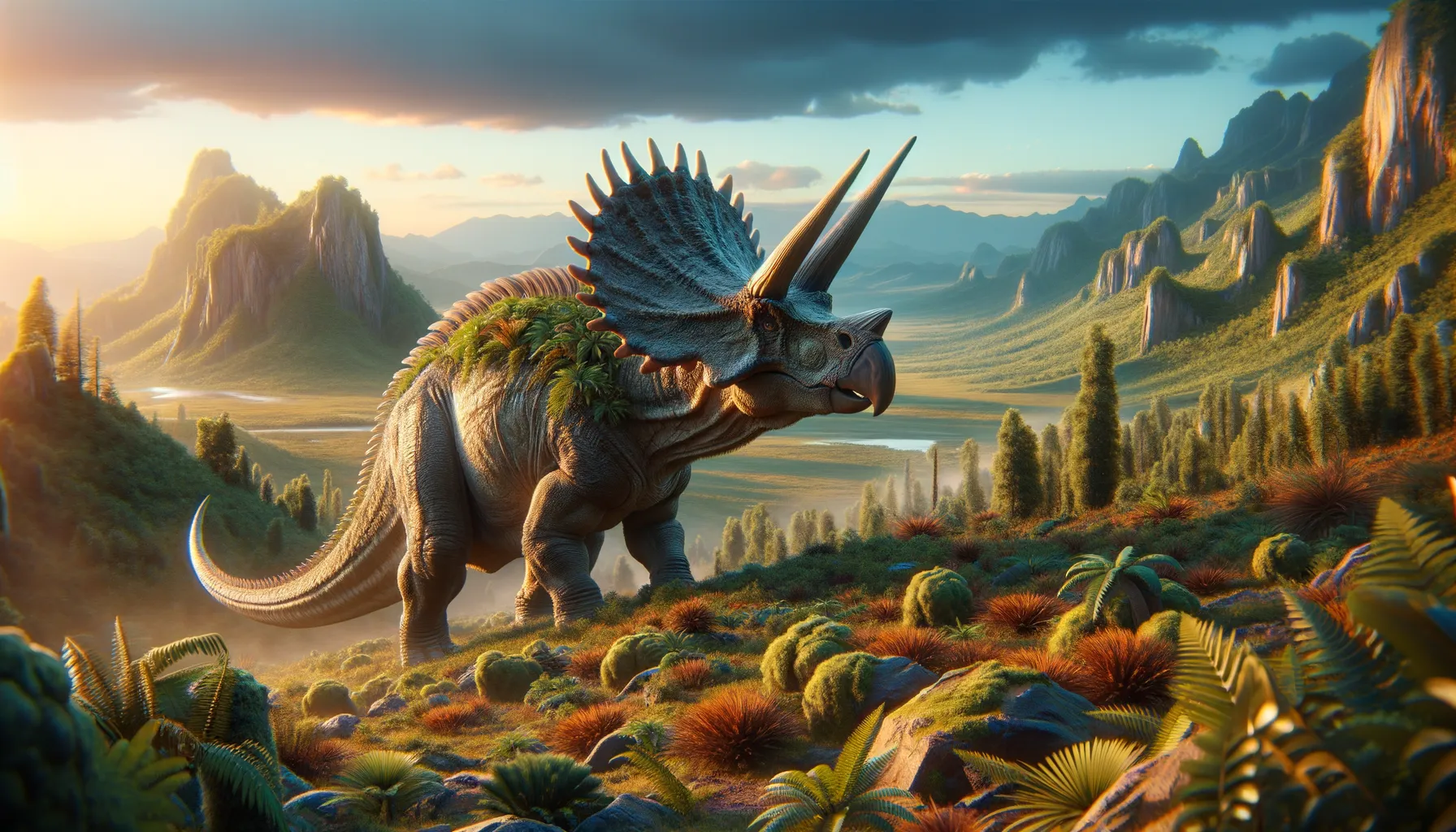
Bainoceratops
A frilled warrior of the ancient plains.
Period
Cretaceous
Length
Up to 5 meters long.
Height
Around 2 meters tall at the hips.
Weight
Approximately 1 to 2 tons.
Bainoceratops was a herbivorous dinosaur known for its moderate size and distinctive frilled head. It roamed the Cretaceous landscapes, using its beak to clip vegetation. With a sturdy body, Bainoceratops was well-adapted to defend itself against predators of its time. The discovery of its fossils has provided insights into the diverse dinosaur population that inhabited ancient Mongolia.
Diet
Bainoceratops primarily fed on low-lying vegetation. Its beak-like mouth allowed it to efficiently clip and consume tough and fibrous plants.
Hunting
As an herbivore, Bainoceratops did not hunt but would have foraged for plant material. Its primary focus would have been on finding sufficient food to sustain its size.
Environmental challenges
Bainoceratops faced challenges such as limited water availability and seasonal changes that affected the availability of vegetation. Predators like larger carnivorous dinosaurs also posed a constant threat. Climate shifts during the Cretaceous period required adaptability to survive changing habitats.
Speed
Moderate, suited for short bursts rather than long chases.
Lifespan
Estimated to be around 20 to 30 years.
First discovery
Unearthed in Mongolia in the late 20th century.
Fun Facts
- Bainoceratops was a small ceratopsian dinosaur that lived during the Late Cretaceous period.
- It was discovered in the Gobi Desert region, highlighting the rich fossil history of this area.
- Although part of the ceratopsian family, Bainoceratops did not have the large frilled crest like its famous relatives such as Triceratops.
- This dinosaur's name, Bainoceratops, means 'Bain's horned face,' honoring its scientific and geographic discoverers.
- Unlike larger ceratopsians, Bainoceratops likely relied more on speed for defense from predators.
- Fossil evidence suggests that Bainoceratops lived in herds, offering protection and community for raising young.
- Bainoceratops adds to the understanding of ceratopsian diversity and evolution in Asia during the Cretaceous.
Growth and Development
Bainoceratops likely experienced rapid growth in its juvenile stage to reach a size capable of deterring predators. Development of its frill and horns would have been crucial for protection and possibly for mating displays. Juveniles stayed with the herd for safety in numbers.
Habitat
Bainoceratops lived in open plains and woodlands, where vegetation was abundant. These areas provided a source of food and opportunities for socializing within herds. Seasonal migrations may have occurred in search of greener pastures.
Interaction with other species
Bainoceratops shared its habitat with other herbivorous and carnivorous dinosaurs. It likely formed herds as a defense mechanism against predators. Interspecies competition for food was possible, influencing its migratory patterns.
Natural lifespan
Its natural lifespan is estimated to be between 20 and 30 years.
Reproduction
Bainoceratops reproduced by laying eggs, with nests possibly shared among the herd for protection. Hatchlings were small and relied on parental care initially. The growth rate was fast, suggesting a need to quickly reach a more defensible size.
Social behaviour
Bainoceratops likely exhibited herd behavior as a means of protection. Social structures may have been based on size and strength, with dominant individuals leading. Communication within the herd would have been important for warning of predators.
Fossil locations
Bainoceratops fossils have primarily been found in Mongolia. These discoveries have been crucial in understanding ceratopsian diversity and distribution in Asia. The fossil sites provide insights into the paleoecology of the region during the Cretaceous.
